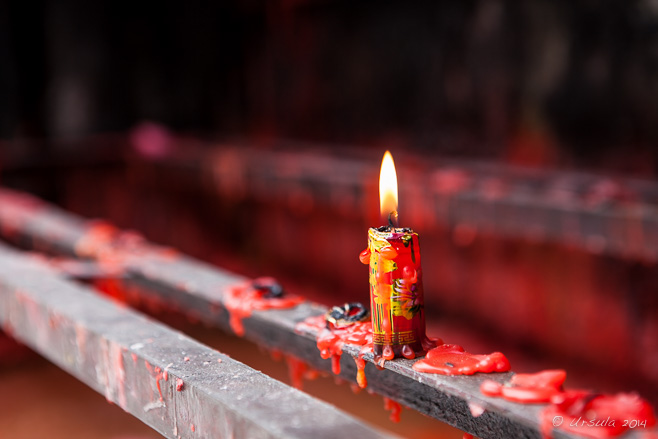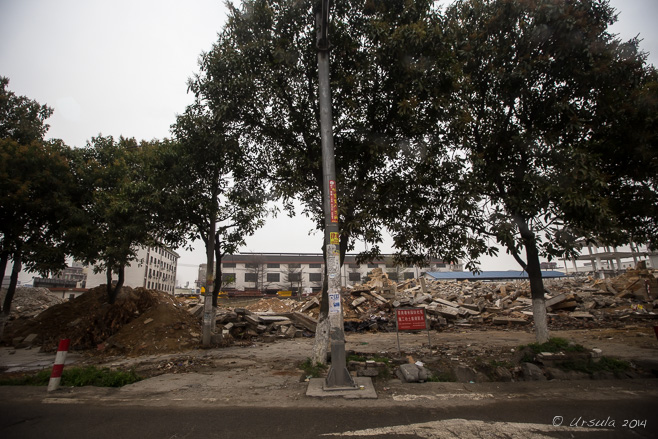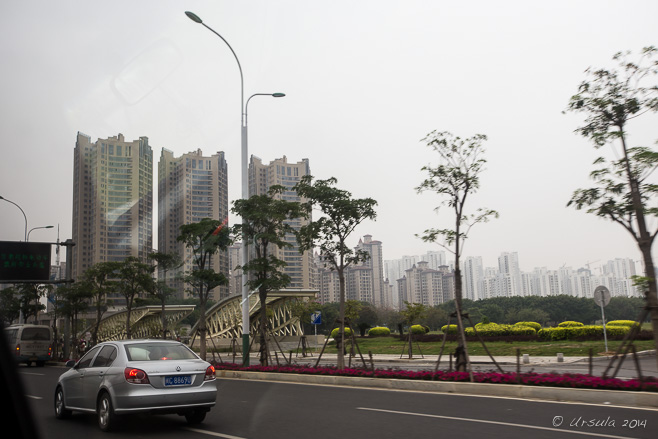
Candle ~ Kaiyuan Temple ~ Quanzhou
Red, symbolising fire, is the colour of good fortune and joy in China. It is also wonderfully cheering on a gray, overcast day.
My husband is in China at the moment.
I am not. Such is life!
I shouldn’t complain too much; his absence gives me extra time to get to photos I haven’t yet processed… including those pictures I took when I tagged along on his last trip to China in April. We stayed in Xiamen (Amoy): regularly rated highly among China’s most-livable cities. It is a university town, with a lot to offer visitors (Watch this space!).
So, I could have cheerfully spent more time there. One day, however, my husband had to make the one-hour-plus trip to nearby Jinjiang, and I had the option to tag along. Not one to pass up an opportunity, I jumped at the chance.
“Why would you want to come to Jinjiang? Why don’t you stay in Xiamen?” asked one of my husband’s Chinese colleagues. “Even the locals are leaving!”
It is true: Jinjiang, Quanzhou, Fujian, in southeast China (not to be confused with Jinjiang, Chengdu, Sichuan, in the southwest – or any other Jinjiang that might exist in China) is known more for the large number of factories operating thanks to foreign-investments – manufacturing clothing and name-brand footwear, predominantly – than for its tourist appeal. The area attracts migrant labourers from around Fujian Province and beyond, who come to work on one-year contracts, often staying in barracks-like dormitories with few amenities and minimal landscaping. Bleak.
But, I like to visit places that are not necessarily on the main tourist trails. I enjoy being a traveller rather than a tourist. And – not that I “pull rank” – there is a real advantage in being a visiting-boss’s wife. I wasn’t left entirely to my own devices: I was given a driver for the day, and the driver was given a list of places of interest which mostly coincided with the places I had hoped to see. My lack of Mandarin and the driver’s lack of English meant that the list ruled, and I went where I was led.
Most of the places we visited were not in Jinjiang, but back across the river in Quanzhou.

Rubble
The outskirts of Jinjiang are replete with buildings coming down; work projects that have started and stalled.

High-Rises, Quanzhou
High-rises, low-rises, and concrete blocks – all under a gray sky that always feels like winter… This is one of the prevailing mental images I have of my times in China. As we cross the Jin River, a modern metropolis comes into view.

Quanzhou Longshan Temple
Built in the Sui (Xiyue) Huang Thai years (618-619), this temple complex is so important to the faithful that many who have migrated out of Jinjiang and Quanzhou (especially to Taiwan) make regular pilgrimages back.

Lanterns and Inscriptions in the Eaves
Since this temple was built, other temples called “Longshan” have been constructed by migrants from Fujian Province to other parts of China and Taiwan. The first Longshan Temple in Taiwan was built from materials imported from Jinjiang.

Candles and Prayers
Visitors to the temple worship a mixture of Buddhist and Taoist deities.

Courtyard
It is hard to tell new buildings from old in the inner courtyards. Memorials to deceased ancestors line the side of one building.

Dragon on the Roof
The dragons and round roof tiles are such a distinctive feature of traditional Chinese architecture.

Prayers
Years of strict communist rule don’t seem to have impacted on the desire to pray for good fortune or guidance – even among the young.

Prayer Beads and Bobbles
Talismans with Buddha images and carved prayers are readily available…

Religious Shop
… as is anything else you might need for your religious practice or study.

Joss Sticks Burning
There was smoke in the air and plenty of activity as we arrived at nearby Guandi Temple.

Guandi Temple
This large, ornate, Taoist temple is busy with local people coming to pray.

Revered General
Guandi Temple is dedicated to two Chinese generals, Guan Yu and Yue Fe.

Ritual Furnace
Guandi Temple is known for the huge furnace designed for the ritual burning of joss paper.

Burning Joss Paper

Furnace Detail

Entry
Our next stop was at the 1000-year-old Qingjing (Ashab) Mosque.

Roof Detail
The mosque was restored in 2009. The clean lines and subdued colours of the the Arab-style building are in distinct contrast with the nearby Chinese temple architecture.

Crypts ~ Ashab Mosque
During the Song Dynasty (960-1279), Quanzhou was a key foreign trade port and was home to a large international community: including Arab, Persian, and Indian Muslims.

Ancient Stonework ~ Qingjing Mosque
The local Arab Muslim community maintains the mosque’s heritage and buildings.

Bombax Ceiba
Back outside, the flowers were falling off the red cotton trees.

Lunch Set
Our next stop was at a wonderful noodle shop, so dark I couldn’t have read the menus even if they had been in English. I ended up with a delicious, fragrant broth with broccoli and lotus root – and did my best to ignore my upbringing and slurp appreciatively.

Stonework ~ Kaiyuan Temple
Delicate stonework decorates the walls around Fujian Province’s largest Buddhist temple complex.

Zhenguo Pagoda
The Twin Pagodas at Kaiyuan Temple are the highest of China’s stone pagodas.

Door Handles
A pair of marvellous creatures guard the entrance to the Zhenguo Pagoda.

Gardens ~ Looking towards Reshou Pagoda
The grounds in the Kaiyuan Temple compound are beautifully landscaped and maintained.

Mahavira Hall
Kaiyuan Temple was originally built in 685 or 686 during the Tang Dynasty. In the late 13th century, it was taken over by the Tamil Hindu community. Parts were rebuilt and dedicated to Lord Shiva. It was designated a national temple in 1983.

Buddhas in the Hall of Mahavira

Story Tiles
One of the buildings is covered in delicately painted stories…

Story Wall
… while elsewhere, carved panels tell tales.

Bells
Mid-afternoon, we drove back across the river to Jinjiang, and up an impossibly steep and bumpy dirt road of blind corners and switch-backs to what was to be the penultimate stop: a modest modern temple perched on a cliff. The bells on the stone pagoda send prayers to the skies and overlook the factories below.

Tea with the Monks
Jimmy the Driver and I were invited inside to have tea. I think Jimmy and the monks are old friends.

Making Tea
Each small pot of tea took time, as the leaves were packed into the little pot…

Green Tea
… and the water was poured. The leaves were left to steep before the tea was strained into a glass pot, then served in small glass cups.
It’s those moments: sharing tea with monks, that make travelling with locals so precious. The hot tea perfectly capped off a damp, but richly rewarding day. My face was sore from smiling – both from enjoyment and from the need to communicate non-verbally.
 The irony is that I wanted to send a little something back with my husband for the driver, to express my appreciation for a day well spent. When we looked for souvenirs, the only reasonably-priced “Australian” trinkets we could find were “Made in China” – and quite possibly made in Jinjiang!
The irony is that I wanted to send a little something back with my husband for the driver, to express my appreciation for a day well spent. When we looked for souvenirs, the only reasonably-priced “Australian” trinkets we could find were “Made in China” – and quite possibly made in Jinjiang!
‘Till next time!
Pictures: 02April2014






































.png)


je echtgenoot is in China en dat geeft je extra ruimte. Mooi, zo kunnen wij van een heerlijk blogbericht van je genieten. En dat heb ik, genoten van je bericht en foto’s. Lieve groet, Dietmut
Dank u voor uw bezoek , Deitmut . Ik zal blij zijn om hem naar huis te hebben. !